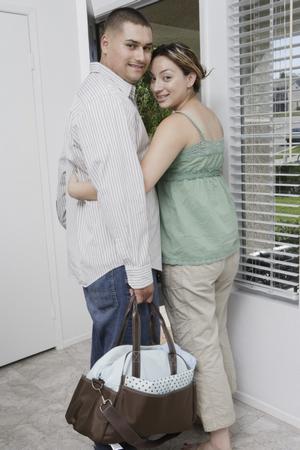D. TIME TO GET READY
a. The Suitcase
Pack Your Suitcase Before You Need It
Think about packing two bags: one with things you will want during labour, another with things you will need during your hospital stay. The second bag should contain the clothes that you and your baby will wear home.
Here are a few suggestions to help you prepare what you will need during labour and delivery.
Here are a few suggestions to help you prepare what you will need for your stay at the hospital.
b. Signs of Labour
During the last few weeks of your pregnancy, your body will give you signs that your delivery is approaching. Here are a few signs that may indicate that your labour will soon begin.
It can be difficult to know whether or not what you feel is really labour. As your body prepares for labour, you may feel certain signs known as false labour. These signs are similar to true labour.
The following table can help you differentiate between true labour and false labour.
Find out in advance whether you should call your health care provider or a triage nurse when you are wondering if you are really in labour.
c. Departure
Your health care provider will give you advice about when you should go to the hospital.

Generally, you should go to the hospital if one of the following situations occur.
- If your waters have broken (rupture of the membranes)
- If you have vaginal bleeding
- If your contractions are five minutes apart and the hospital is located less than 30 minutes away.
- If your contractions are 10 minutes apart and the hospital is located more than 30 minutes away.
- If you have lasting persistent pain.
When in doubt, call the labour and delivery ward at the hospital.
How to Time a Contraction
- Use a watch with a second-hand and count the seconds out loud.
- Note the time when a contraction begins. Note the time when the contractions ends. This is the length of the contraction.
- Note the time when the next contraction begins. The time between the beginning of one contraction and the beginning of the next contraction is the frequency or how far apart the contractions are .
The following diagram will help you time a contraction.
d. Guide to Labour and Birth
This guide will give you information on the following:
- what will happen
- how you may feel
- what you can do
- what your labour partner can do to help
This guide is printable. Bring it with you to the hospital. It might help you and your partner to keep track of your labour and to stay as confident and comfortable as possible.






